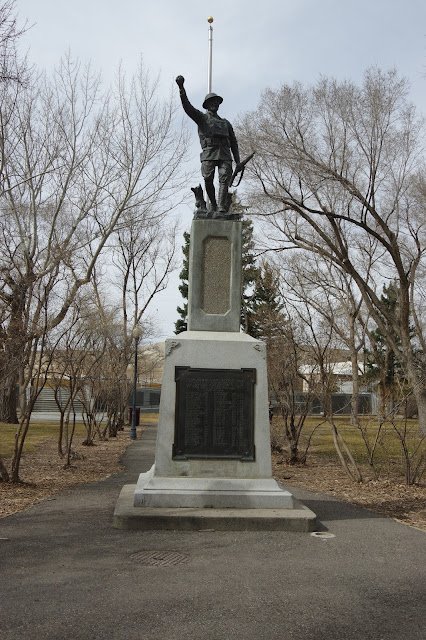This is a bit of an unusual roadside monument in the West as it doesn't commemorate a battle between European Americans and Indians, but rather between two separate tribes if Indians. It commemorates the March 1866 battle between the Shoshone and Crows near the Wind River Range in Wyoming.
The date, and the event, are interesting ones. By 1866 warfare between the United States and the combined Sioux and Cheyenne had broken out in earnest. The Crows were fighting the Sioux and had been for quite some time. Indeed, they were fighting a loosing battle in their war with the Sioux and had offered to throw in with the United States in aid that effort. Ironically, the Shoshone were allies of the United States.
Both the Shoshone and the Crows were under tremendous pressure from the Sioux and Cheyenne, who had been expanding out onto the territory that had formerly belonged to those tribes. The Crows in particular had suffered a tremendous territorial loss in that they had been pushed out of the prairie region of Wyoming for the most part by that time but they were still attempting to contest for it. The Shoshone had also suffered a territorial loss but, with their anchor in the Wind Rivers, which the Sioux had not yet reached, their situation was not as dire.
Nonetheless, we see how these factors can play out in odd ways. Both tribes were here essentially defending their traditional grounds. The Crows could hardly afford to loose any more of theirs as they'd already lost so much. Nonetheless, as can be seen here, they were defeated in this battle and they would in fact go on to have to accept the loss of much of what they had formerly controlled.
The Shoshones were already looking at asking for a reservation at the time this battle took place and even though this ground had been already assigned to the Crows by treaty. The Crows were effectively defeated by the Shoshone in the area and Crowheart Butte became part of the Shoshone Reservation very shortly thereafter.
The text of this roadside monument makes it quite clear that this sign was made quite some time ago, probably in the 1950s. The text that is on it would never be placed on a monument today, in that the partisan language regarding "whites" would simply not be done. Indeed, in many instances such signs tend to get removed. At least one old historical marker in New Mexico has had some of the text chipped out in order to edit it, and at least one of these road side markers in Wyoming that had somewhat similar content has been removed. That's a shame, as in editing to fit our current definition of history, we in fact do a little injustice to the story of history itself by removing the evidence of how things were once perceived.

















































